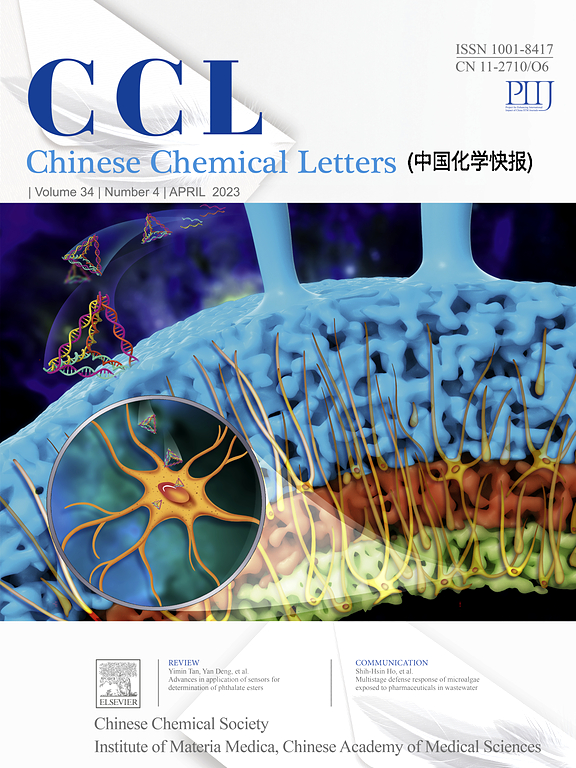Modulating single-atom Co and oxygen vacancy coupled motif for selective photodegradation of glyphosate wastewater to circumvent toxicant residue
IF 9.4
1区 化学
Q1 CHEMISTRY, MULTIDISCIPLINARY
引用次数: 0
Abstract
The typical wastewater treatment is focused on the photocatalytic efficiency in the degradation of organic pollutants, with little attention to the involved selectivity which may correlate with toxicant residues. Herein, an electron localization strategy for specific O2 adsorption/activation enabled by photothermal/pyroelectric effect and in situ constructed active centers of single-atom Co and oxygen vacancy (Co-OV) on the Co/BiOCl-OV photocatalyst was developed for photocatalytic degradation of glyphosate (GLP) wastewater of high performance/selectivity. Under full-spectrum-light irradiation, a high GLP degradation rate of 99.8% with over 90% C‒P bond-breaking selectivity was achieved within 2 h, while effectively circumventing toxicant residues such as aminomethylphosphonic acid (AMPA). X-ray absorption spectroscopy and relevant characterizations expounded the tailored anchoring of Co single atoms onto the BiOCl-OV carrier and photothermal/pyroelectric effect. The oriented formation of more •O2− on Co/BiOCl-OV could be achieved with the Co-OV coupled center that had excellent O2 adsorption/activation capacity, as demonstrated by quantum calculations. The formed unique Co-OV active sites could largely decrease the C‒P bond-breaking energy barrier, thus greatly improving the selectivity toward the initial C‒P bond scission and the activity in subsequent conversion steps in the directional photocatalytic degradation of GLP. The electron localization strategy by in situ constructing the coupled active centers provides an efficient scheme and new insights for the low-toxic photodegradation of organic pollutants containing C‒X bonds.

求助全文
约1分钟内获得全文
求助全文
来源期刊

Chinese Chemical Letters
化学-化学综合
CiteScore
14.10
自引率
15.40%
发文量
8969
审稿时长
1.6 months
期刊介绍:
Chinese Chemical Letters (CCL) (ISSN 1001-8417) was founded in July 1990. The journal publishes preliminary accounts in the whole field of chemistry, including inorganic chemistry, organic chemistry, analytical chemistry, physical chemistry, polymer chemistry, applied chemistry, etc.Chinese Chemical Letters does not accept articles previously published or scheduled to be published. To verify originality, your article may be checked by the originality detection service CrossCheck.
 求助内容:
求助内容: 应助结果提醒方式:
应助结果提醒方式:


